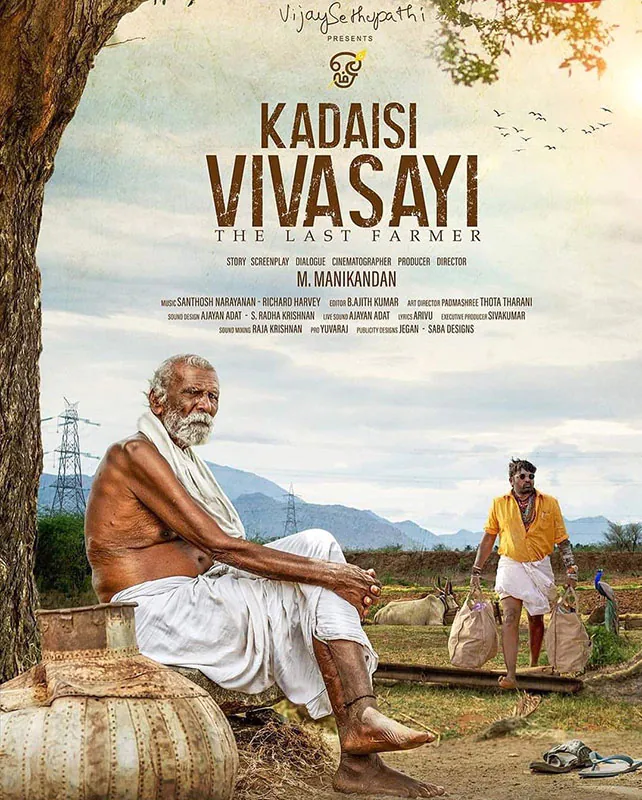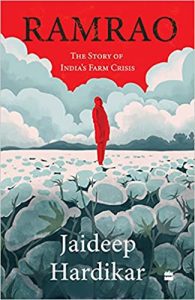
Kadaisi Vivasayi: Simple story that fully captures the farmer’s turmoil
M Manikandan’s film succinctly describes the pains of the poor Indian agricultural worker without getting preachy

Can farmers’ turmoil be shown on the screen without an ounce of preaching? Had he been asked, National Award-winning filmmaker M Manikandan would have said “Yes”. However, nobody asked him he did not utter a word on it. Instead, he brought out Kadaisi Vivasayi (The Last Farmer), a feel-good film on the subject.
Produced by himself, the film stars Nallandi, Vijay Sethupathi and Yogi Babu. It revolves around an octogenarian named Mayandi (played by Nallandi) in a village in southern Tamil Nadu.
Several threads to a simple plot
The plot is rather simple. Mayandi owns some land on which he continues to do farming, even as most of the other farmers in the village give up their land to real estate agents. The others opt to sell out because of the never-ending problems of agriculture — low selling prices, lack of rains, higher prices of seeds and fertilizers, and so on.
Also read: Attacks on Christians in Tamil Nadu on the rise, says report
However, Mayandi believes that agriculture alone can save humanity. He turns down an attractive offer for his land. A few days later, he finds three peafowls dead on his field and, without wondering why they died, buries them.
Around this time, the village decides to celebrate its traditional deity with prayers for rains. It is a custom to offer the first harvest of paddy grains to the deity during such festivals. The farmers approach Mayandi for ‘mother’ paddy seeds, and he agrees to help.
It’s while he is tending to the paddy field that the police detain him, charging him with killing and burying the peafowls. What happens next forms the crux of the film. The slow paced, brilliantly written screenplay ties together the various threads of the story in a nuanced way — what happens to Mayandi and his field, how the temple celebration proceeds, and so on.
Also read: Chepauk to Kollywood: The dramatic rise of Jai Bhim’s Manikandan
Within the plot, the film seeks to discuss the current condition of farming in the country. At a time when farmers are complaining of peafowls as pests, the knot of the film lies in the death of the birds, and on doubts that they may have been poisoned.
It may be noted that over the past few years, farmers growing crops close to mountains and hills have been complaining about peafowls. The birds are increasingly moving from their hilly habitats to the plains for food, and this is being attributed to climate change. In this backdrop, a farmer showing empathy towards the birds by giving them a decent burial strikes a chord.
The MGNREGA angle
The films touches upon various other current topics related to the rural economy. For instance, in a recent speech, economist J Jeyaranjan, a member in the State Planning Commission, explained how the Mahatma Gandhi National Rural Employment Guarantee Scheme (MGNREGA) helps farmers. “In Tamil Nadu, even in the fertile lands, there would be no work for farmers for more than 130 days. So, in the remaining days of the year, they are unemployed. In order to assist them, we provide MGNREGA work,” he said.
Also read: Discrimination & violence drove 40 Dalits in TN village to embrace Islam
However, some political parties such as the Naam Tamilar Katchi say MGNREGA has induced farmers to move out of agriculture, creating a shortage of farm labourers. The film makes a reference to this topic, too, as Mayandi tries to get a group of women to work in his field.
Further, in one of the scenes, a character points out how Mayandi lives without even a ration card. This recalls another point made by Jeyaranjan. “The feudal system got pulverised with the introduction of the public distribution system (PDS) in the State. Most of the agricultural labourers who worked under landlords as slaves were finally given some relief because now, through the PDS, they get free rice,” he said.
Next, the film shows how the judiciary is not sufficiently sensitised towards agricultural problems. A district judge orders a policeman to water and take care of Mayandi’s fields while he does his prison term. The results on the field show how unfeasible that order was.
Parallels to Jaideep Hardikar’s book
There are many parallels between the film and Ramrao: The story of India’s farm crisis, the most recent book of journalist Jaideep Hardikar, published by HarperCollins India. The book talks about the farmer suicides that continue to haunt Vidarbha, Maharashtra. It may be noted that farmer Ramrao was fortunate to have been saved after he consumed a pesticide in 2014.

“Ramrao has been losing his crop on account of pest attacks, spurious seeds, spurious fertilisers, monsoon failure, monsoon delay, extreme rainfall, the market slump. Not to forget the wild animal menace,” writes Hardikar.
In a similar situation, Mayandi is cajoled by a fertiliser shopkeeper to sow genetically modified tomato seeds that give seedless yields. The same shopkeeper, in another scene, sells an ‘expired’ pesticide to a villager, saying it only becomes more toxic and effective when it’s past its shelf life.
Hardikar writes that there was a time when the middle classes would keep an eye on the monsoon because it had a bearing on their family budgets. “Not anymore. Today, these two worlds are starkly different,” says.
The book ends with a positive note that Ramrao, even after his thwarted suicide attempt, is still sticking to agriculture. The film, too, ends on a similarly positive note. The reality, of course, is often darker.

